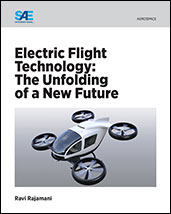Book

Advances in Electric Propulsion
2017-05-18
Aviation propulsion development continues to rely upon fossil fuels for the vast majority of commercial and military applications. Until these fuels are depleted or abandoned, burning them will continue to jeopardize air quality and provoke increased regulation. With those challenges in mind, research and development of more efficient and electric propulsion systems will expand. Fuel-cell technology is but one example that addresses such emission and resource challenges, and others, including negligible acoustic emissions and the potential to leverage current infrastructure models. For now, these technologies are consigned to smaller aircraft applications, but are expected to mature toward use in larger aircraft. Additionally, measures such as electric/conventional hybrid configurations will ultimately increase efficiencies and knowledge of electric systems while minimizing industrial costs.














